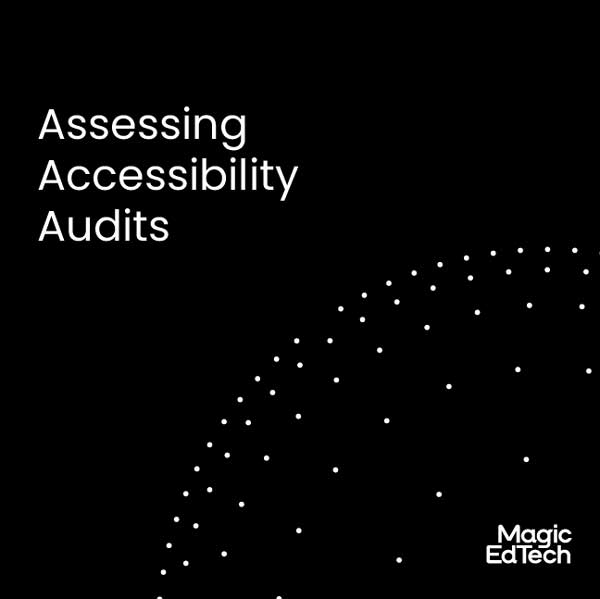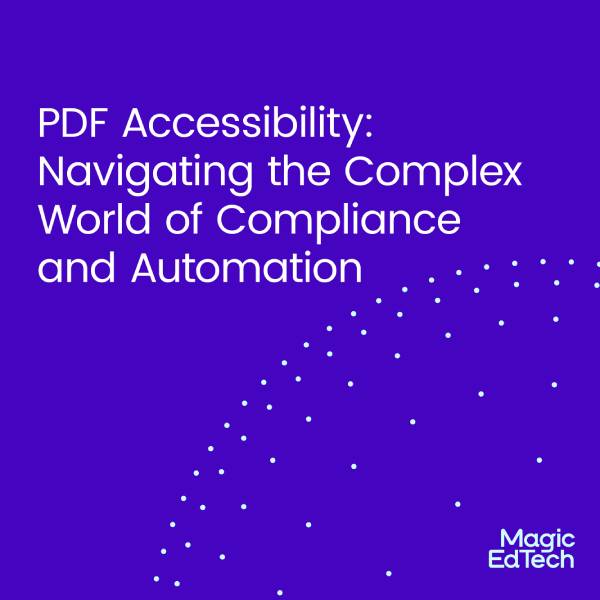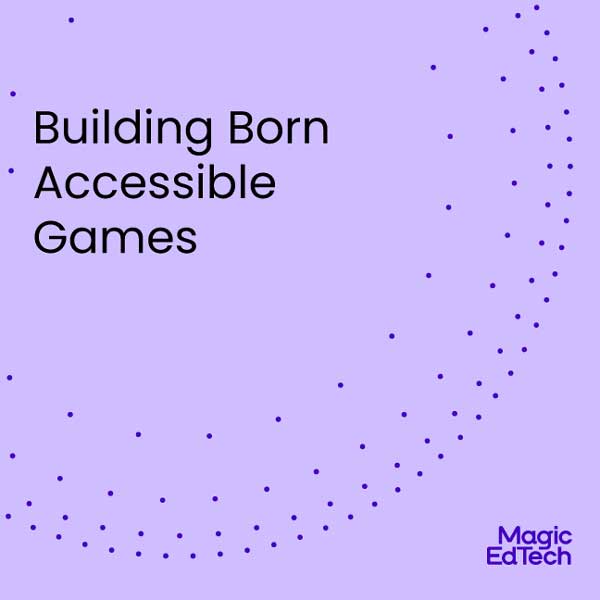Simplifying What WCAG 2.2 Means for Your Digital Products
- 28 February, 2023
- Reading Time: 5 minutes
As the world moves into a digital age, it’s important to ensure that everyone has access to all technological resources regardless of their ability. That’s where the Web Content Accessibility Guidelines (WCAG) come in. These guidelines ensure that websites, apps, and more are accessible to users of all abilities. In this article, we’ll explain why the updates to WCAG 2.2 will continue to help make the digital world more inclusive for all.
What’s new about WCAG 2.2?
WCAG 2.2 builds on previous versions of the guidelines, adding new success criteria and expanding on existing ones. WCAG 2.2 was released in October 2023. The goal of WCAG 2.2 is to make web content more accessible to a wider range of people with disabilities, including people with cognitive and learning disabilities, mobile accessibility, and people with a low vision focusing on time-based media and keyboard accessibility.
The updated guidelines cover a range of topics, including content structure, navigational aids, color contrast, and text size. By following these guidelines, organizations can make sure that their websites and applications are accessible to all users.
WCAG 2.2 helps people with disabilities by ensuring that content is accessible to them. This includes making sure that the content is readable and can be navigated using assistive technologies such as screen readers.
WCAG 2.2 also requires that content be designed in a way that is understandable and predictable for users with disabilities, so they can easily find the information they need.
Below are the guidelines added to WCAG 2.2. For detailed information around each guideline, click through the links:
WCAG Level A: 2 new guidelines
- 3.2.6 Consistent Help: If a web page has helpful information, it should be easy for users to find it every time they visit the page. The help information should be in a consistent location on the page unless the user has moved it themselves.
- 3.3.7 Redundant Entry: means that when users fill out a form or provide information on a website, the website should remember that information and either automatically fill it in the next time the user visits or make it easy for the user to select it again. However, there may be cases where users need to re-enter the information for security reasons or if the previously entered information is no longer valid.
Level AA: 4 new guidelines
- 2.4.11 Focus Not Obscured: means that when a user navigates a website using only the keyboard, the selected component should be visible and not blocked by other content on the page. This ensures that the keyboard focus indicator, which helps the user understand where they are on the page, is also visible and not hidden by other elements.
- 2.5.7 Dragging Movements: means that if a website has features like sliders or drag-and-drop interfaces that require users to move things around with their mouse or finger, there should also be another way to use those features without needing to drag anything. This way, people who have difficulty with fine motor skills can still use the website’s features.
- 2.5.8 Target Size (Minimum): requires that website targets, such as buttons, links, or other interactive elements, should be big enough to be easily activated without accidentally clicking on something else nearby. This means that targets should not be placed too close together, as this increases the risk of accidentally activating the wrong target.
- 3.3.8 Accessible Authentication: This ensures there is an accessible, easy-to-use, and secure method to log in, access content, and undertake tasks. Memorizing a username and password (or transcribing it manually) places a very high or impossible burden upon people with certain cognitive disabilities.
Additionally, Note the following updates are made to existing WCAG 2.1 AA guidelines under Level AA
- 4.1.1 Parsing is obsolete and removed from WCAG 2.2. More information is in the WCAG 2 FAQ
Level AAA: 3 new guidelines
- 2.4.12 Focus Not Obscured (Enhanced): This ensures that a component with keyboard focus is visible. This criterion is closely related to 2.4.11 Focus Not Obscured (Minimum) but requires that the whole of the component is visible.
- 2.4.13 Focus Appearance: requires that when a user navigates a website using only the keyboard, there should be a clear and visible indication of which item is currently selected. This indicator should surround the selected item, have a contrast ratio of at least 3:1 against the background, be at least as large as the item’s border, and have a contrast ratio of at least 3:1 against adjacent colors or be at least 2 CSS pixels thick.
- 3.3.9 Accessible Authentication (No Exception): This ensures there is an accessible, easy-to-use, and secure method to log in, access content, and undertake tasks. If information repeats (for example, shipping and billing details) give the ability to auto-populate that information.
WCAG 2.2 covers a wide range of disabilities, including:
Cognitive and learning disabilities: WCAG 2.2 provides guidelines to make web content more accessible to users with cognitive and learning disabilities, such as dyslexia, attention deficit hyperactivity disorder (ADHD), and an autism spectrum disorder.
Examples of disabilities covered under this guideline include:
- Dyslexia: Users with dyslexia may have difficulty reading or comprehending text.
- ADHD: Users with ADHD may have difficulty focusing on tasks or may become easily distracted.
- Autism spectrum disorder: Users with autism may have difficulty with social interaction, communication, and sensory processing.
Mobile accessibility: WCAG 2.2 provides guidelines for making web content more accessible to users who access the web on mobile devices, such as smartphones and tablets.
Examples of disabilities covered under this guideline include:
- Motor disabilities: Users with motor disabilities may have difficulty using a mouse or keyboard.
- Visual disabilities: Users with visual disabilities may use mobile devices with screen readers or magnifiers.
People with low vision: WCAG 2.2 provides guidelines for making web content more accessible to users with low vision, such as users with cataracts, glaucoma, or macular degeneration. Examples of disabilities covered under this guideline include:
- Contrast sensitivity: Users with low vision may have difficulty distinguishing between colors or may require high-contrast content.
- Magnification: Users with low vision may use screen magnifiers to increase the size of text and other content.
WCAG 2.2 makes it easier for organizations to create digital products and services that are accessible to everyone. It also ensures that the products and services we use are future-ready by considering emerging technologies.
Therefore, implementing WCAG 2.2 guidelines is essential to make sure your product or service can be used by all members of society regardless of ability level. In conclusion, WCAG 2.2 enables us to make our digital world more inclusive and welcoming for people with different needs and preferences—a great step forward towards a better tomorrow!





